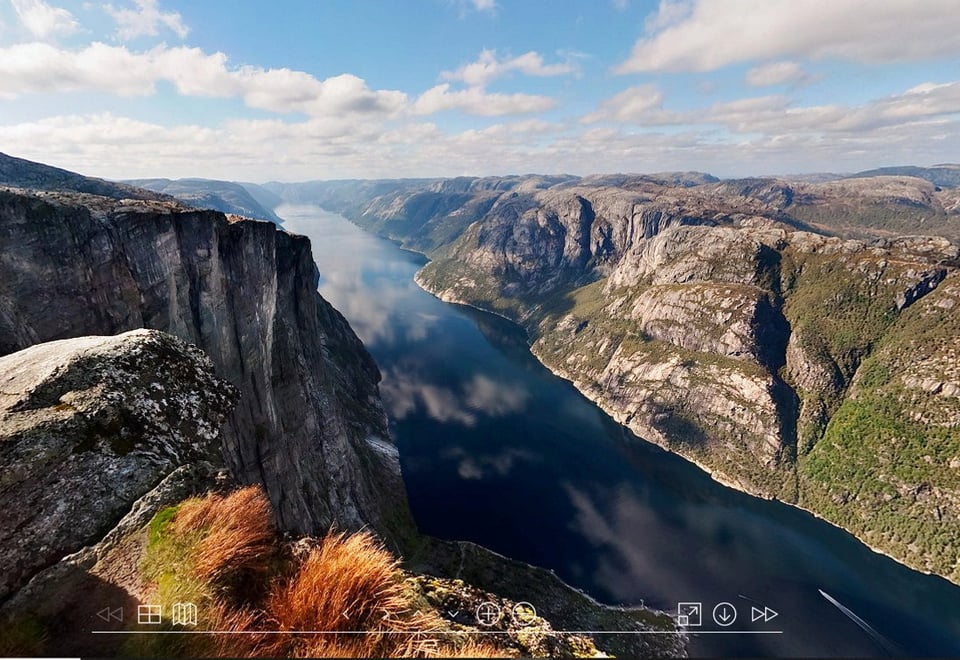
Kjerag as a hiking destination for 100 years
In 2025, the 100th anniversary of the very first known image of Kjeragbolten will be celebrated. In 1925, this iconic stone was immortalized by Thomas Peter Randulff, bank manager and keen Trekking Association member.
Written by: Johannes Apon
Kjeragbolten is a 5 cubic meter large boulder that hangs on to a ravine, a full 984 meters above the Lysefjord, and annually attracts thousands of visitors from all over the world.
But did you know that Nesatindane, just a few hundred meters away from Kjeragbolten, was the original hiking destination for many of the first visitors? It was the mighty Kjerag massif, which boaters experienced from the Lysefjord and called "The Majesty of the Lysefjord", which was the big attraction at the heart of the Lysefjord. And at Nesatindane you could stand on top of this dramatic mountain landscape and enjoy spectacular panoramic views of the Lysefjord. This is still the place for those seeking a safer, but at least as impressive perspective.
In 2025, we invite you to celebrate the 100th anniversary by visiting Kjerag and Nesatindane – experience the magic, history and nature that has enchanted generations.

Kjerag: From Hidden Pearl to Global Icon: The Influence of Romanticism and Early Discoverers
The story of Kjerag stretches far back in time, and the mountain's powerful presence has always fascinated the people around it. The name Kjerag (originally "Kiragg") is explained by small streams that fall off the rock wall and resemble the shag of a cow where the waterfall dissolves.
It was during the romantic era of nation-building in the 1800s, that artists and writers depicted Kjerag and the Lysefjord as dramatic landscapes with both aesthetic and mystical value. Lehmann's painting from the early 1820s is among the first artistic representations of the area. The French writer Victor Hugo wrote in 1866: "The Lysefjord is the most terrible of all the corridor reefs of the sea. (...) Sometimes one can hear the thunder without a cloud being visible in the sky; A ray of light shoots out from the mountain wall at a height of a thousand or fifteen hundred feet above sea level. This lightning bolt shoots forth and retreats like a boomerang."
This so-called "Kjeragsmellet", with water vapour protruding from the rock wall, appears, according to what the local people have said, especially in easterly winds when the wind has a certain strength.
With the arrival of the steamship in the late 1800s, the fjord became accessible to a larger group of people, and places such as Kjerag and Nesatindane began to attract attention.
See also



